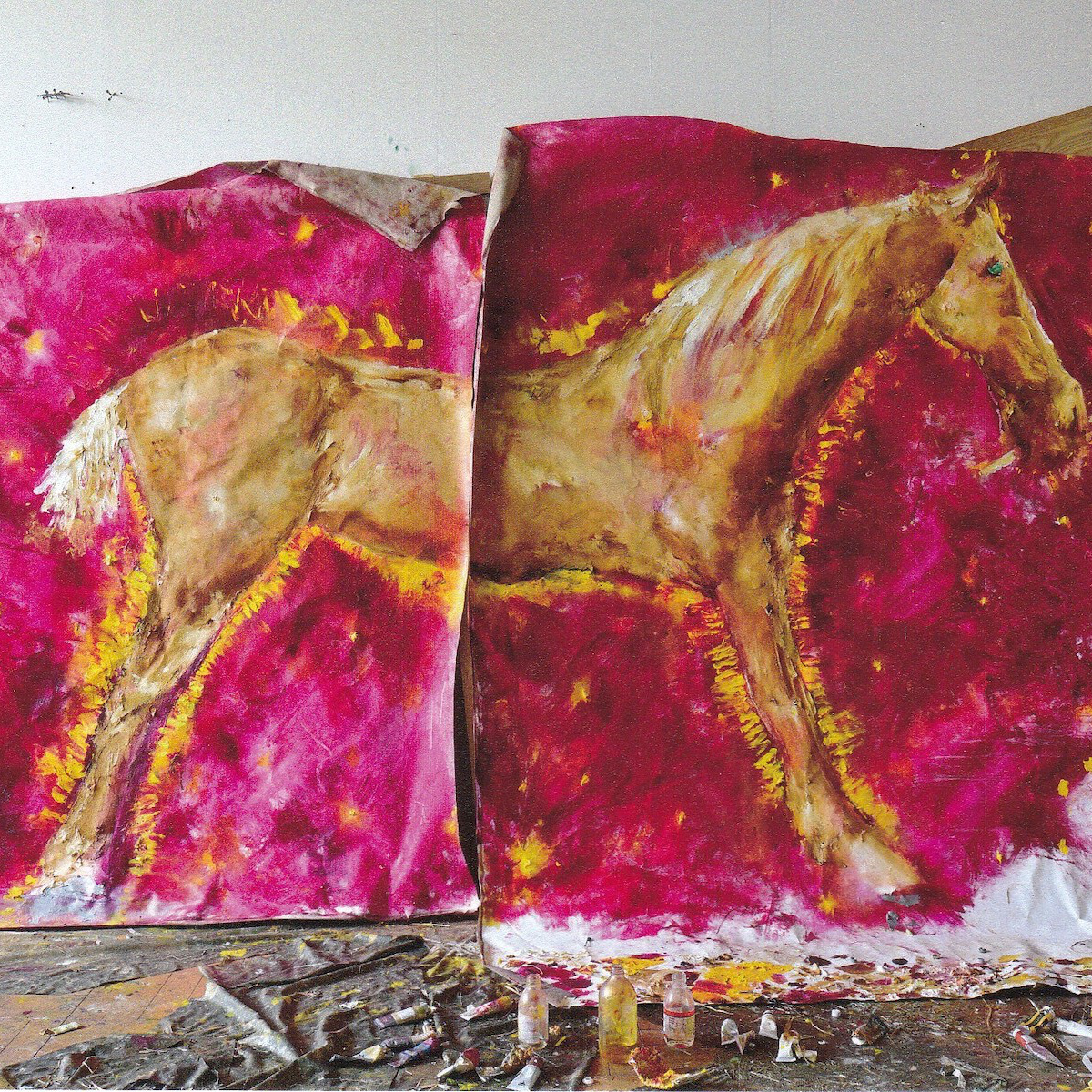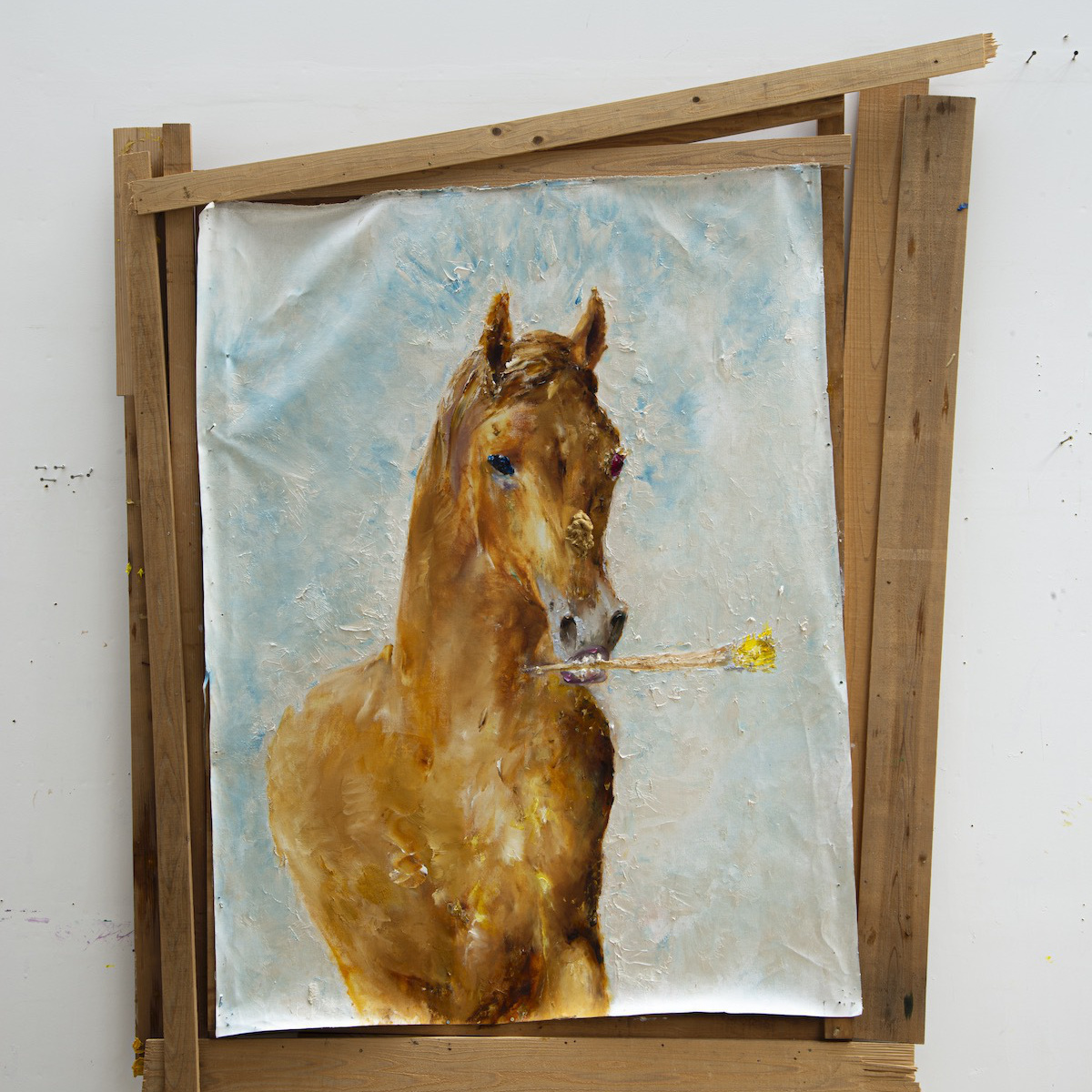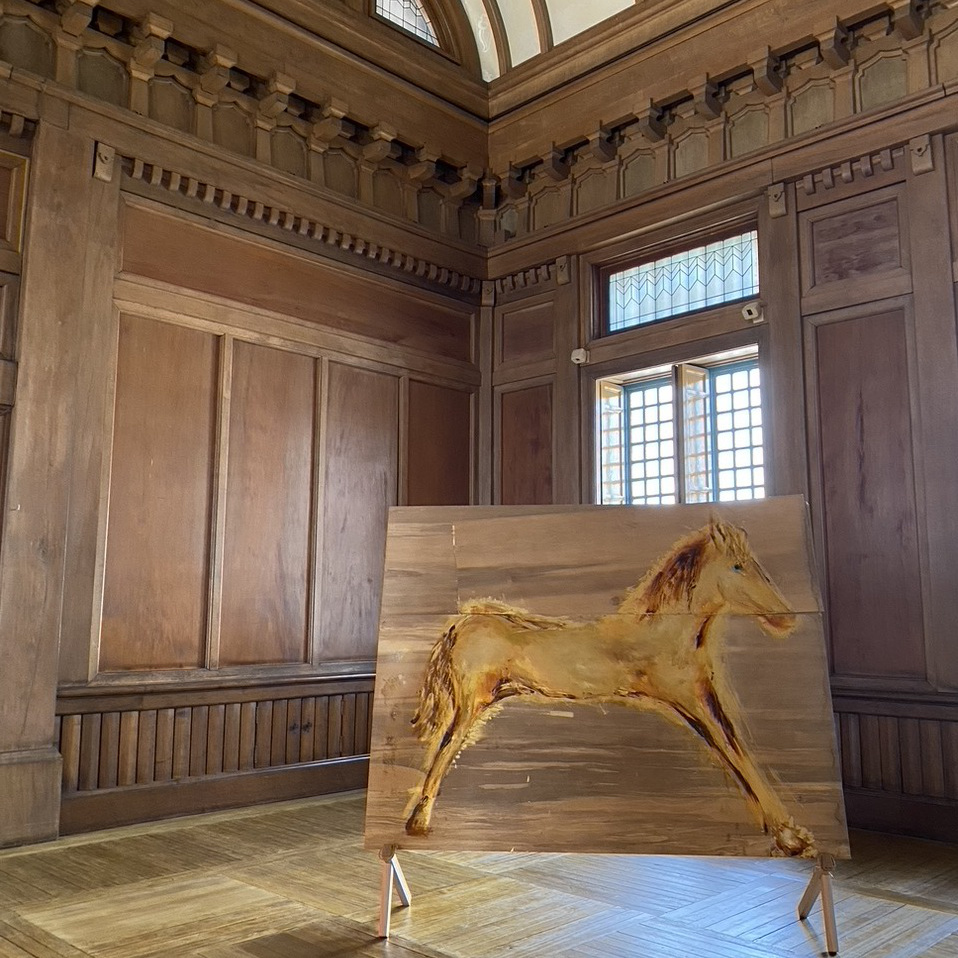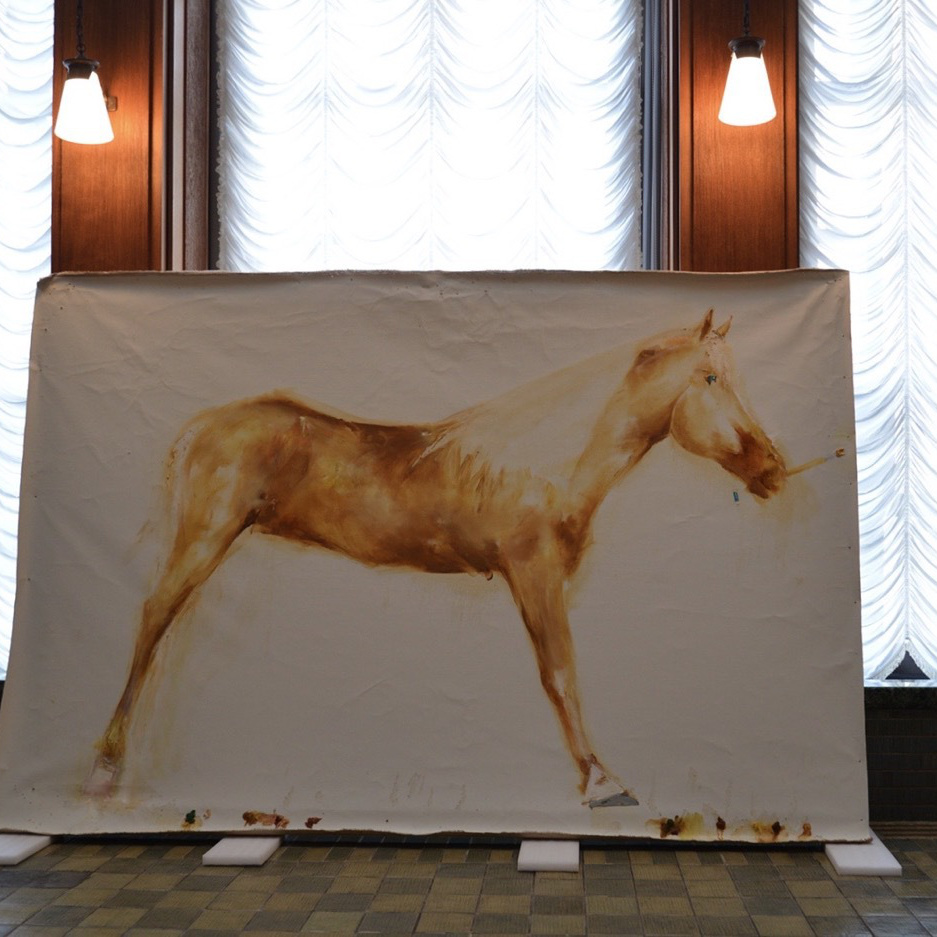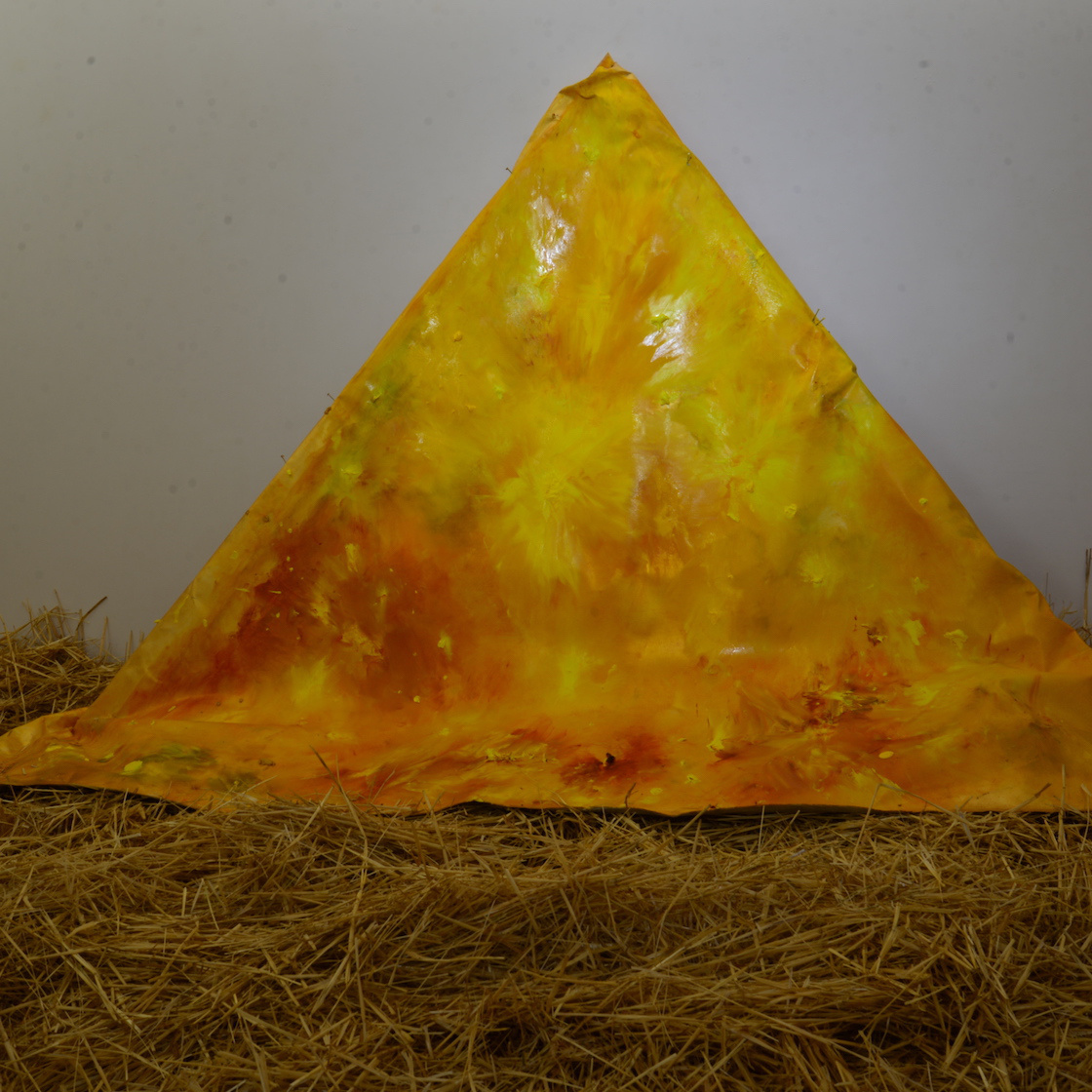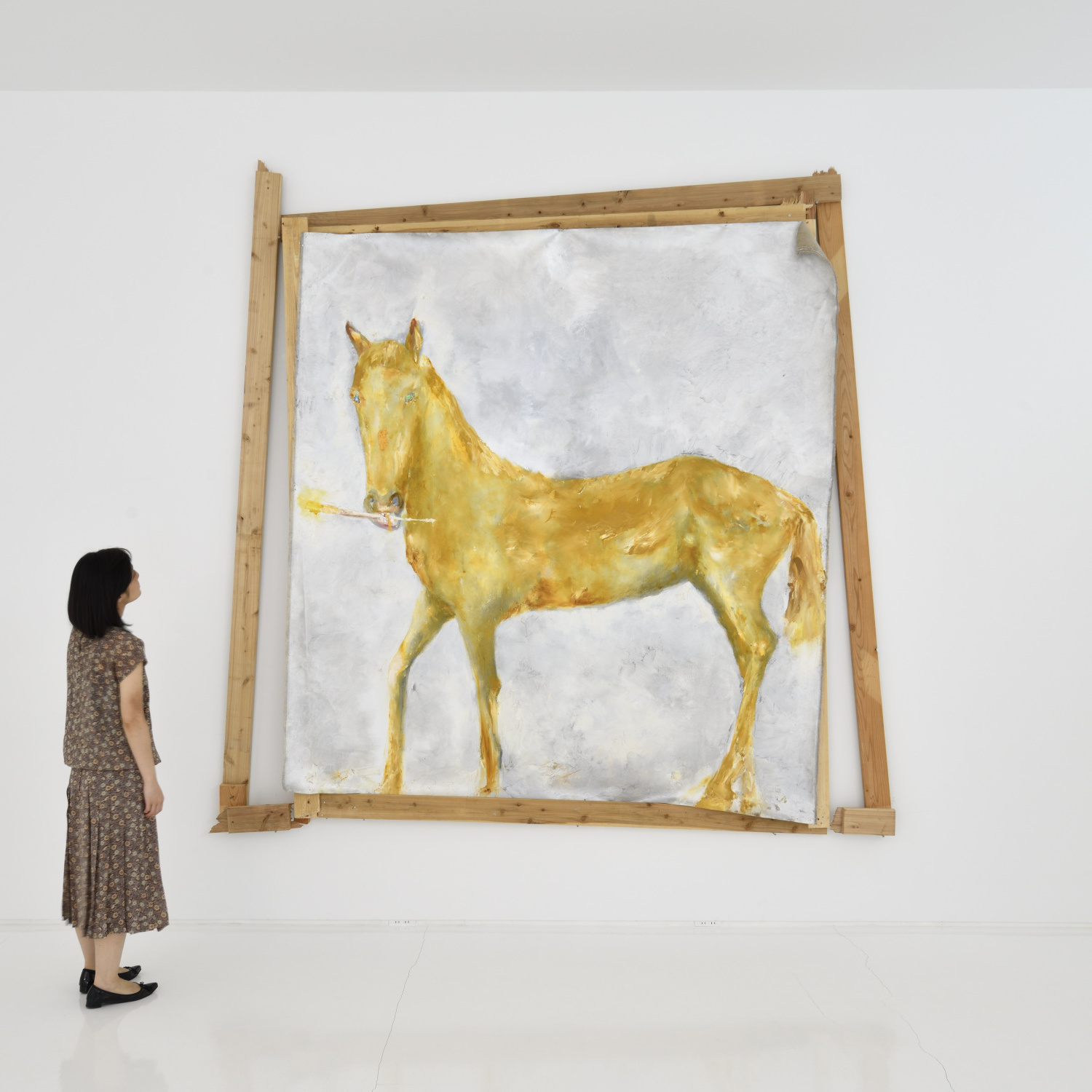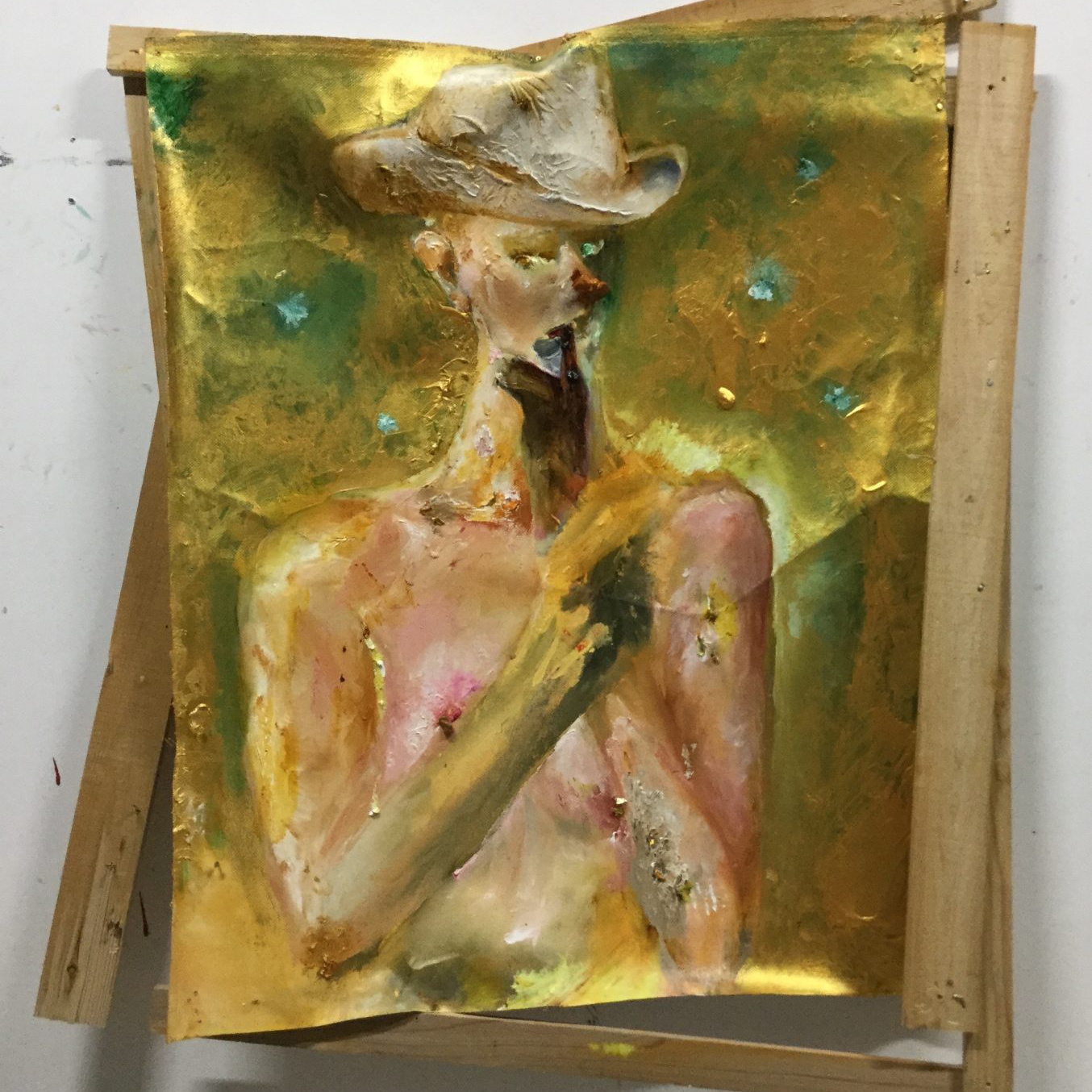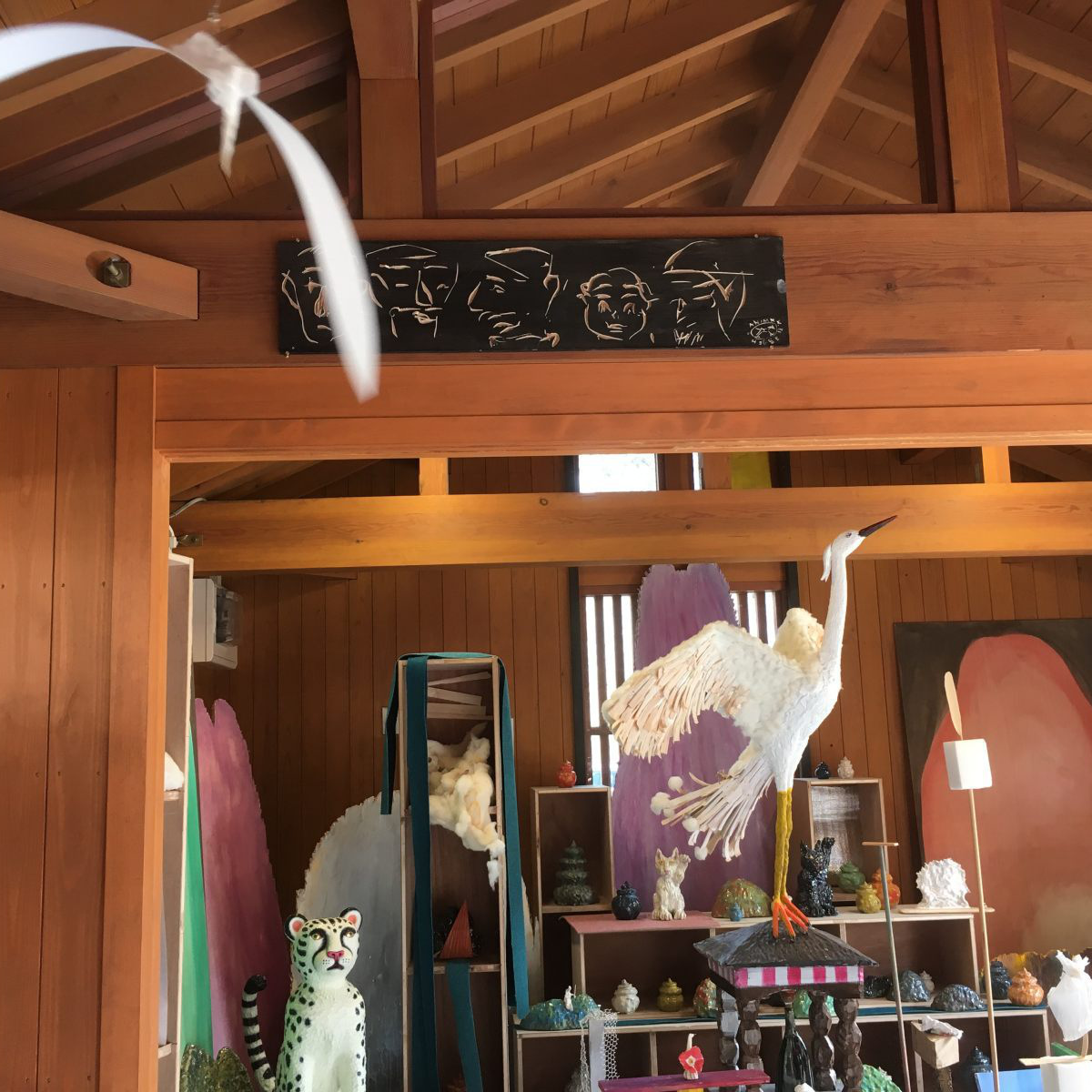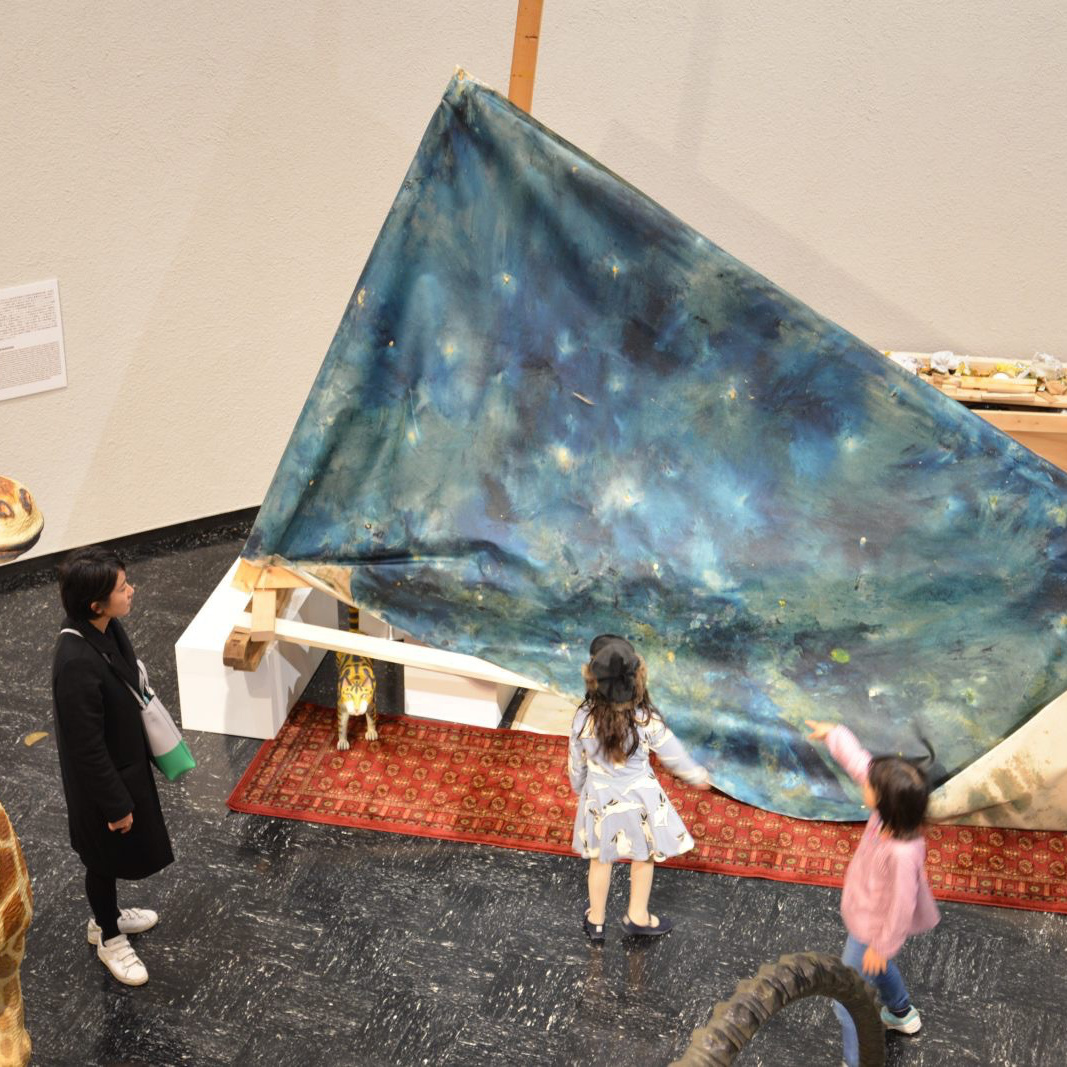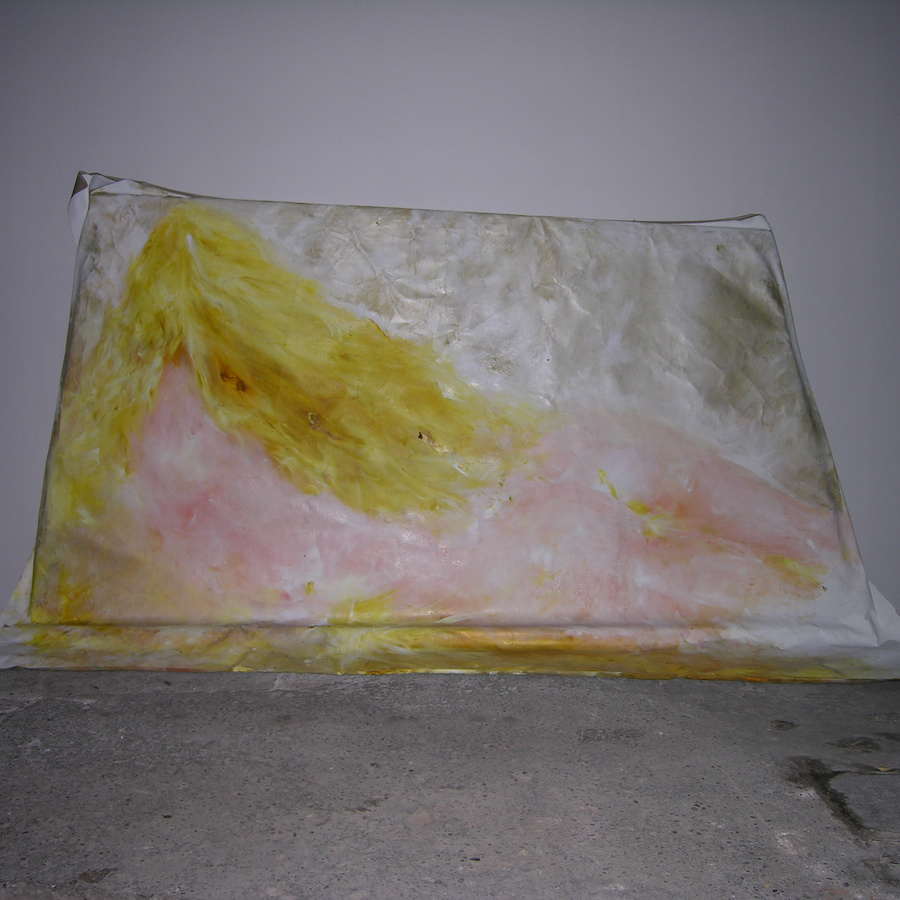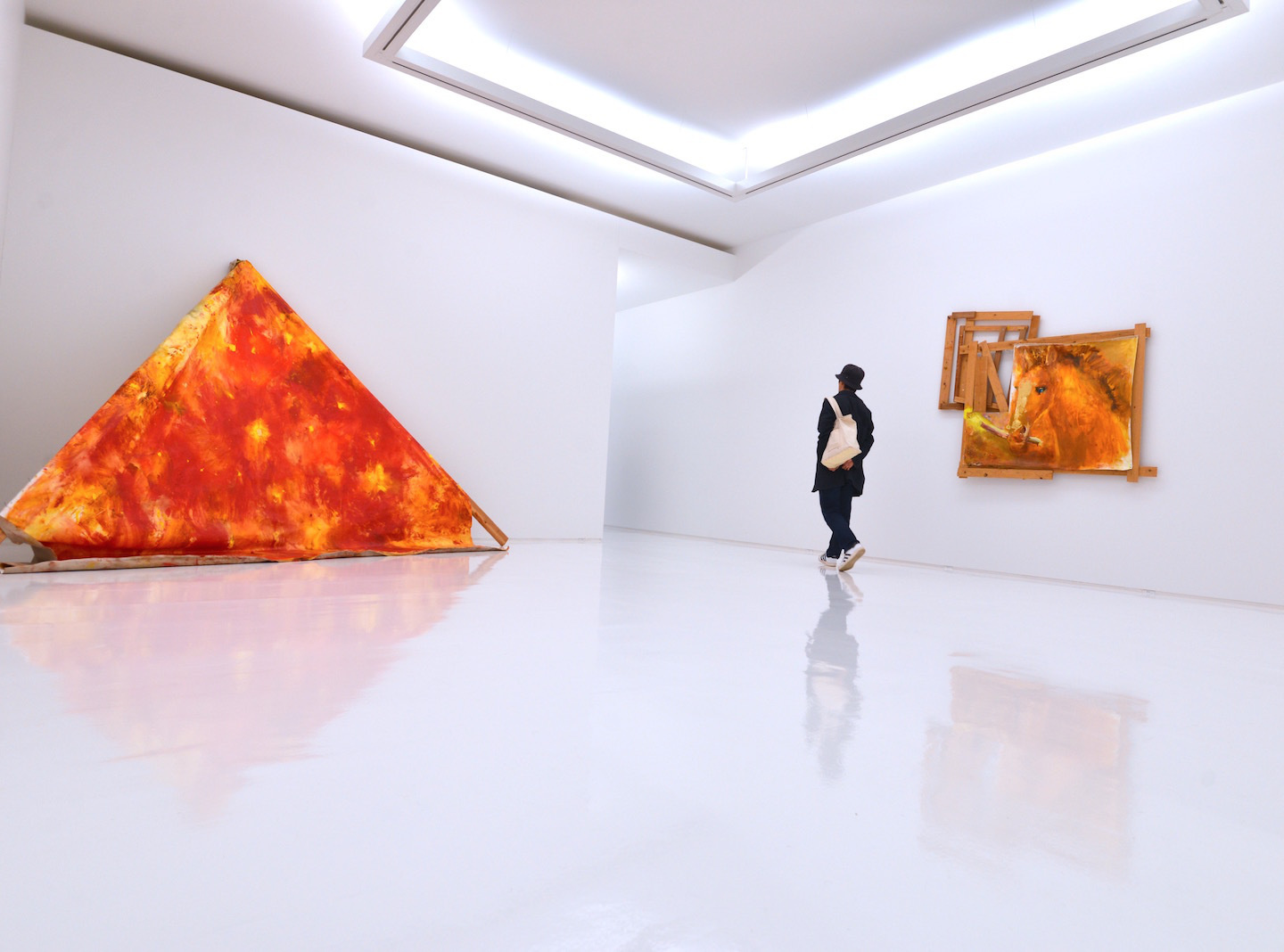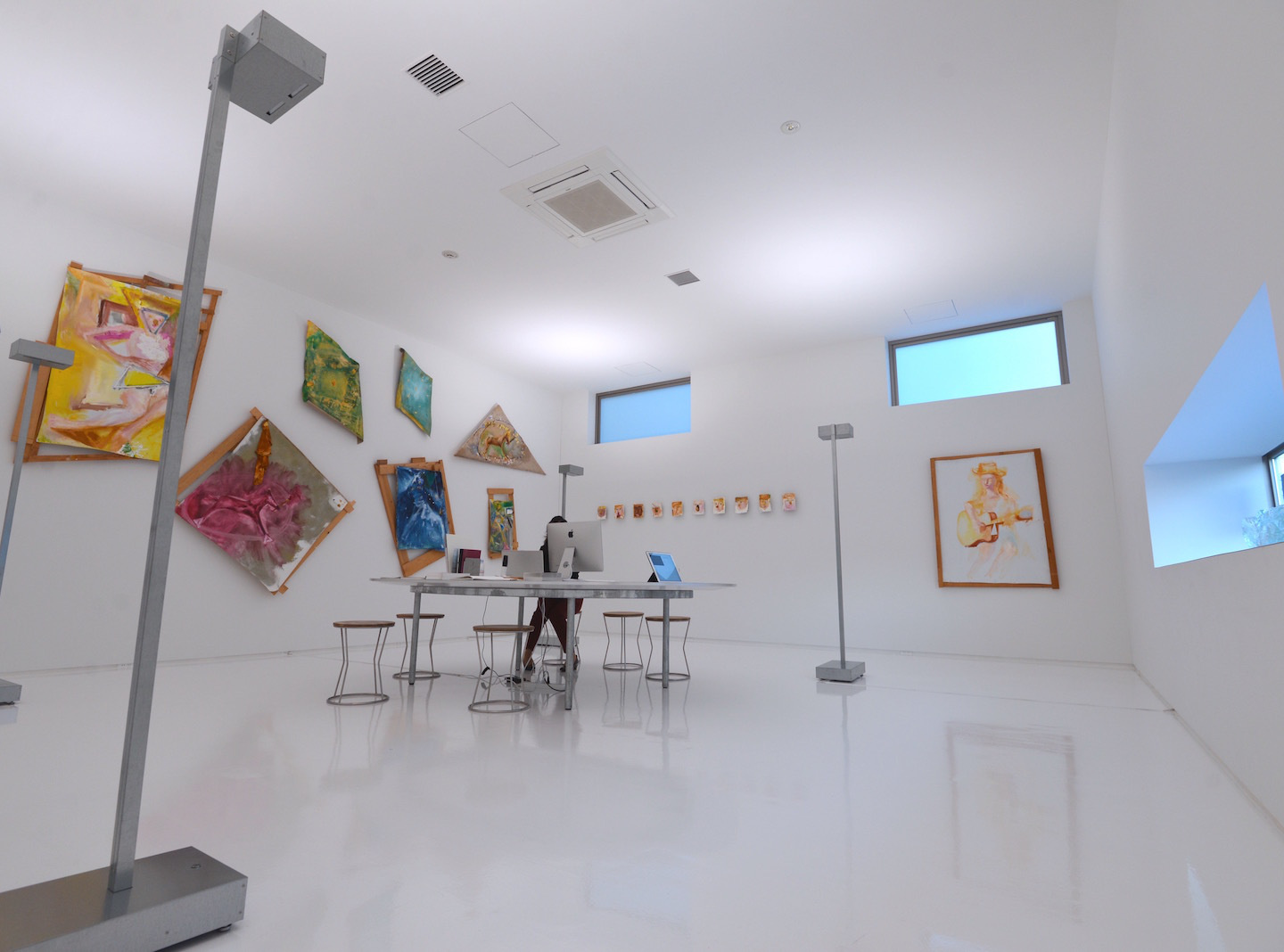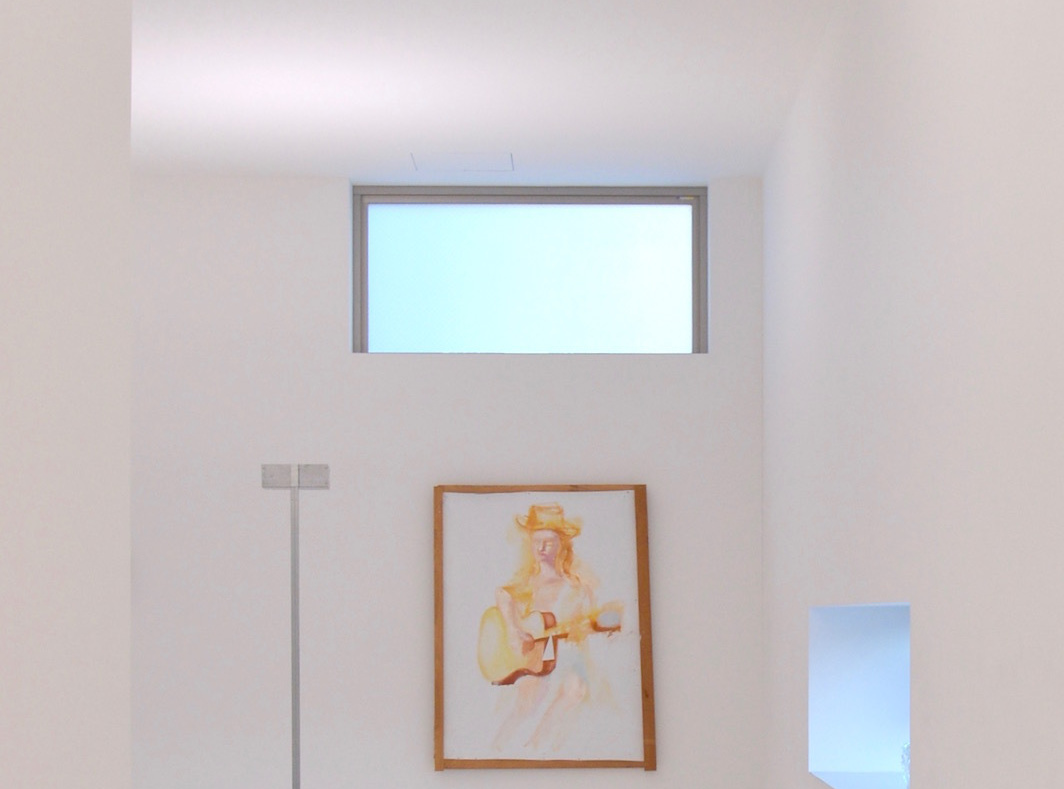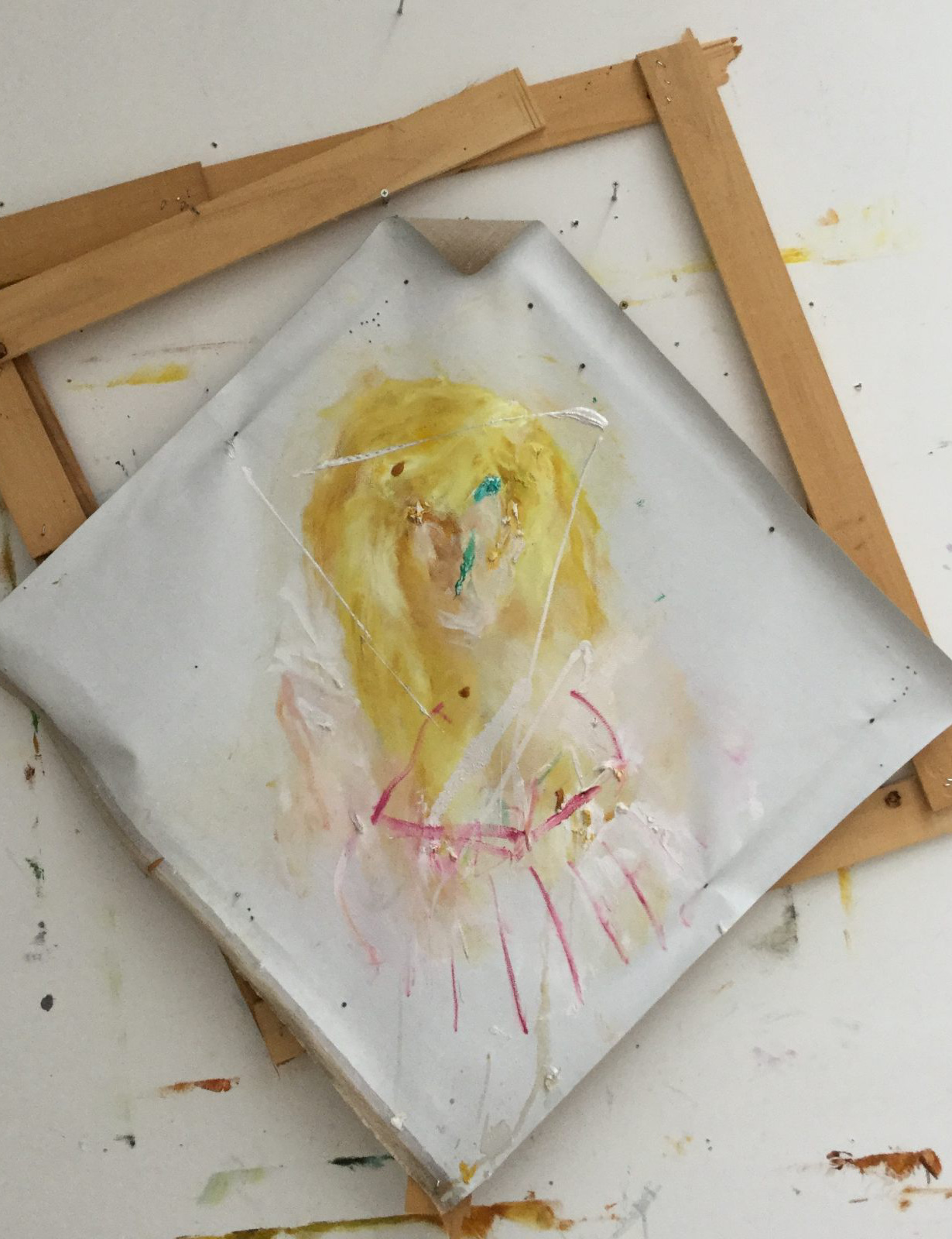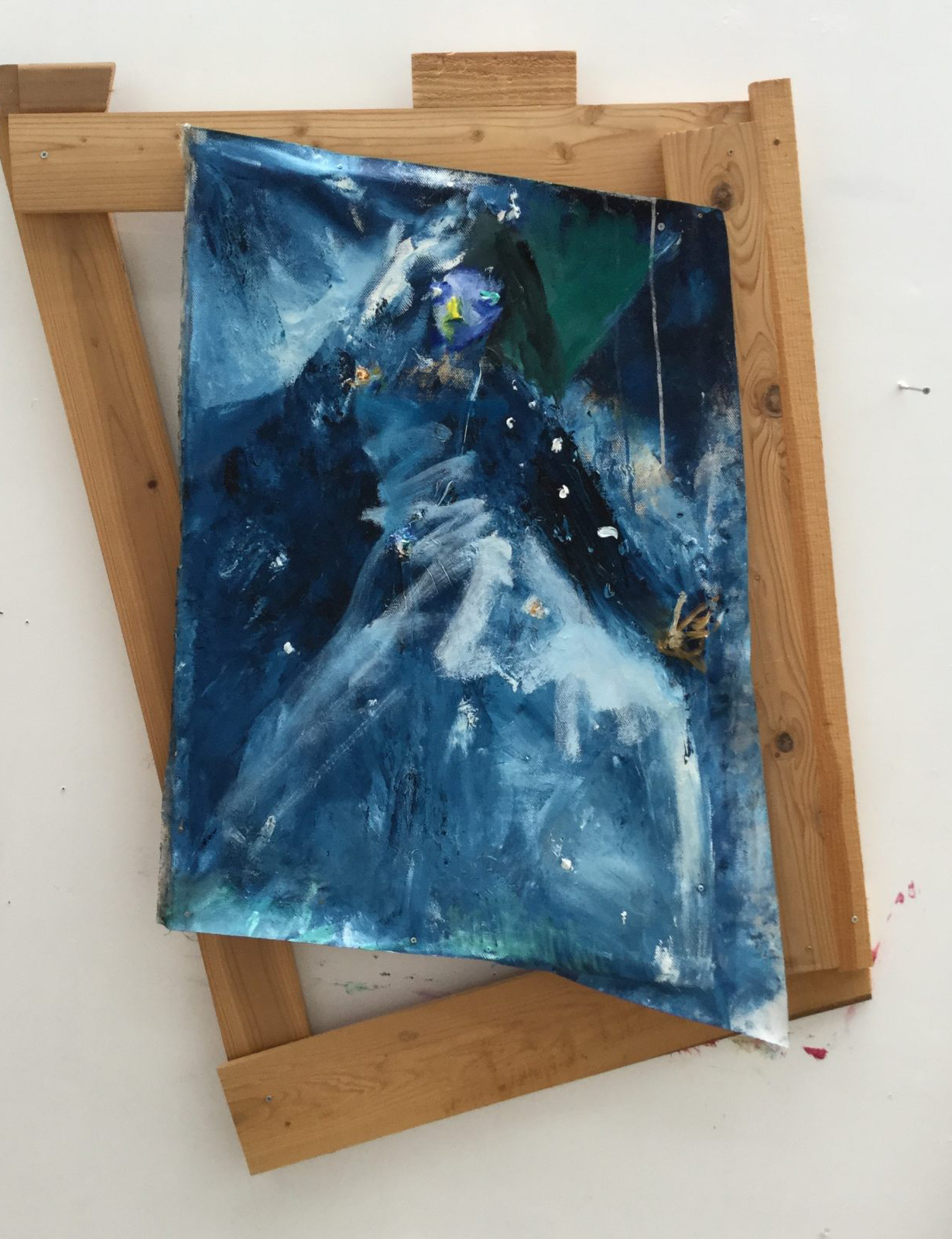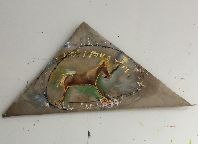“Thrice Upon A Time”, ShugoArts
21 October - 4 Decemver 2016
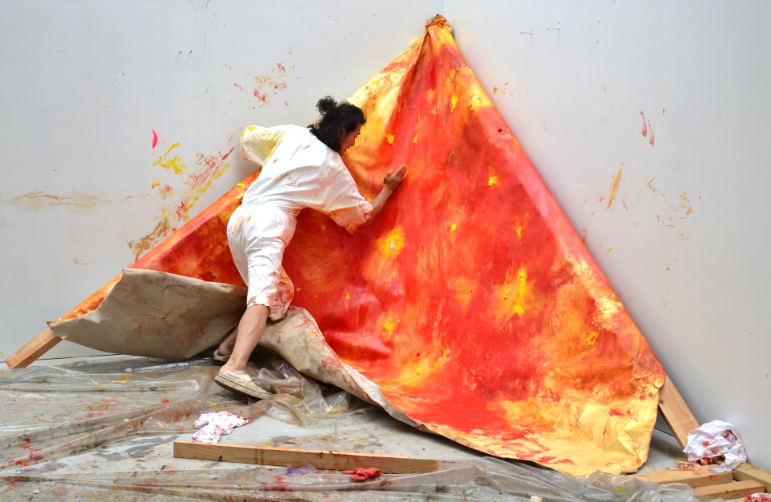
Thrice Upon A Time
美しい光は理屈抜きに喜びなんだけど、、クソみたいなもんに give pleasure される事があるんだよね。
ビューティフルっていうのは物や人の外観のクオリティーだけじゃないからさ。。クソみたいな物や人間のなかにある、或るクオリティーがやたらビューティフルだって事はよくあるだろ。デュシャンの便器とか、ウオーホル、ゴッホ、カラヴァッジョ、ムラカミ、、、みんなそうなんじゃない?だってアートは物の優劣じゃない。
だから紙一重なんだよねー。おれの理想卿はいっつもボーダーの辺。非道い絵、つまり道に非ず!『美しい絵とひどい絵』それらが絵の星の家族に思えて、家族みたいに一緒くたに住んでる、っていうか掛かっていたり床に置いてあったり、空の画も天使も林檎もヌードも抽象画も、、星の欠片みたいなのも、、 FAMILY、、絵の家族だよね、、、。美と糞のボーダーに建ってる絵の家族の小屋、、その原っぱに馬が居たんだ。笑。
Once upon a time,, Twice upon a time,,,Thrice upon a time,,,,,,,
そこにいたカウボーイカウガール。
小林正人 鞆の浦のアトリエにて 2016年8月
小林正人の作品には、破壊するのではなく生成するという意味での「生」が横溢しています。
絵の制作がキャンバスを張るときからすでに始まっていて、キャンバスを張り終わるときが完
成であるという、理屈では可能だが実現は困難な手法に行きついたのは80年代の半ば、小林正
人が20代のときでした。
画家として生きることを決心し、新しい芸術を目指した若き日の小林正人が、大学時代に吸収
したラスコーなどの洞窟壁画から20世紀ミニマリズムまでの大きな芸術の流れを前にして、己
の芸術表現の立脚点を求めたその先に待っていたのは、「白いキャンバスを木枠に張ってから
描き始めるのではすでに遅い」「ミニマリズムまで行った後の芸術の世界で依然として芸術様
式的に意義のある絵を描こうとするならば、新しい手法を獲得しなければ描き始めるわけには
いかない」という必然的かつ誠実な、しかし困難に充ちた命題でした。
印象派、セザンヌ、マティスを経てポロック、ニューマン、ロスコ、ステラなどのアメリカ抽象
表現主義の流れ、ミニマリズム、コンセプチュアリズムが日々論じられ、絵画とは呼ばず「平
面」と呼ぶのがならわしであったそのような時代の小林正人には、具体も実験工房ももの派も
浮世絵もいかなる主義も眼中にはなく、東京・国立のアトリエで孤高の中に今に至るオリジナ
ルな手法を獲得したのでした。
1997年に伝説的キュレーターとなったヤン・フート(1936 -2014) の誘いに応じてベルギー・
ゲントに渡欧したのはそれから10年以上先のことで、小林はそこで初めて作品を床に置き立て
掛けるという、絵画の掟を破る展示に到達します。いち早く彼の真の独創性に気付いたのはヤ
ン・フートだけではなく、彼の作品に遭遇した蔡国強やKris Martin、Sislej Xhafaといった何人
かのアーティスト達でした。その後日本へ戻った現在も後進のアーティスト達に影響を与え続
ける小林の存在はArtist’s artistと呼ぶにふさわしいものでしょう。
「昔々」の三乗に当たるThrice Upon A Time と名付けられた本展は、そうした小林正人の感慨
にも似た自身の人生とルーツを振り返ったときふとつけられたタイトルです。疾走を続ける小
林が今時空を超えたある種の宿命を感じ、ShugoArtsの新スペースをオープンさせます。
六本木に移転したシュウゴアーツの新しいスペースのこけら落としとなる今展覧会 Thrice Upon
A Time にお運びいただければ幸いです。
シュウゴアーツ 佐谷周吾
Masato KOBAYASHI
Thrice Upon A Time
October 21 Fri. – December 4 Sun., 2016
"Thrice Upon a Time"
Beautiful light fills us with visceral pleasure, but something that looks like shit can also give us pleasure.
'Cause as we all know, beauty isn't just about the external qualities of a thing or a person. A lot of times the fact that a certain quality is contained in something or someone that looks like shit makes it even more beautiful. That goes for Duchamp's urinal, Warhol, van Gogh, Caravaggio, and Murakami. Because art isn't about something being better or worse.
That's why there's such a fine line. My utopia is always right there next to the border. Bad paintings are made by outlaws! I think of the paintings in Love, More Awful! But More Beautiful, Because Painting Is All for Love as a family of the planet. Like a family, they live together in a jumble – they're hanging on the wall, they're resting on the floor, there are angels, skies, apples, nudes, and abstract paintings…fragments of stars…family…it's a family of paintings! It's a family of this planet on the border of beauty and shit. And there are some horses out there on the plain. Laughter.
Once upon a time, twice upon a time, thrice upon a time… there was a cowboy and a cowgirl.
Kobayashi Masato,
Tomonoura Studio, August 2016
―― ―― ―― ――
Kobayashi Masato's works overflow with life, with the generative, rather than the destructive principle. It was in the mid-1980s, when he was in his 20s, that he arrived at a process of producing paintings that begins with stretching a canvas and ends when the canvas is stretched, a method that is logically possible, but difficult to realize in practical terms.
The young Kobayashi, having decided to be a painter and seeking for a new form of art, looking over the history of art from the Lascaux cave paintings to 20th-century Minimalism, which he had absorbed in university, and seeking a base on which to establish his own art, faced truths that were undeniable, inevitable, but daunting: "By the time you stretch a white canvas on stretcher bars and start painting on it, it's already too late to make something genuinely new", and "If you want to continue producing paintings of formal significance in the post-Minimalist art world, you must begin by pursuing an entirely new process".
Kobayashi came of age in an era when there was constant discussion of the history of modern art – from Impressionism, Cézanne, and Matisse through Pollock, Rothko, and the other American Abstract Expressionists, and their successors such as Newman and Stella, Minimalism and Conceptualism – and it was a common practice to refer to painting as "two-dimensional art" rather than "painting." He did not concern himself with Japanese avant-garde movements like Gutai, Jikken Kobo, and Mono-ha, or even with ukiyo-e or anything else, but in the solitude of his studio in Kunitachi, Tokyo arrived at an original approach which he carries on to this day.
It was more than 10 years later, in 1997, that Kobayashi moved to Europe at the instigation of the legendary curator Jan Hoet (1936-2014), and it was there that he first broke a cardinal rule of painting by placing his works on the floor and leaning them against the wall. Besides Jan Hoet, others who recognized his originality early on were fellow artists such as Cai Guo-Qiang, Kris Martin, and Sislej Xhafa. Having continued to exert an influence on younger artists since returning to Japan, Kobayashi can truly be called an "artist's artist."
The title of this exhibition, Thrice Upon A Time, is a tripling of the traditional beginning of children's stories, and it came to Kobayashi, a with deep emotional resonance, when he was looking back over his life thus far and his roots. Over the years he has forged fearlessly ahead with his art, driven by a mission transcending space and time. His work opens the new space occupied by ShugoArts.
October, 2016.
ShugoArts Shugo Satani
Exhibistion View
Works
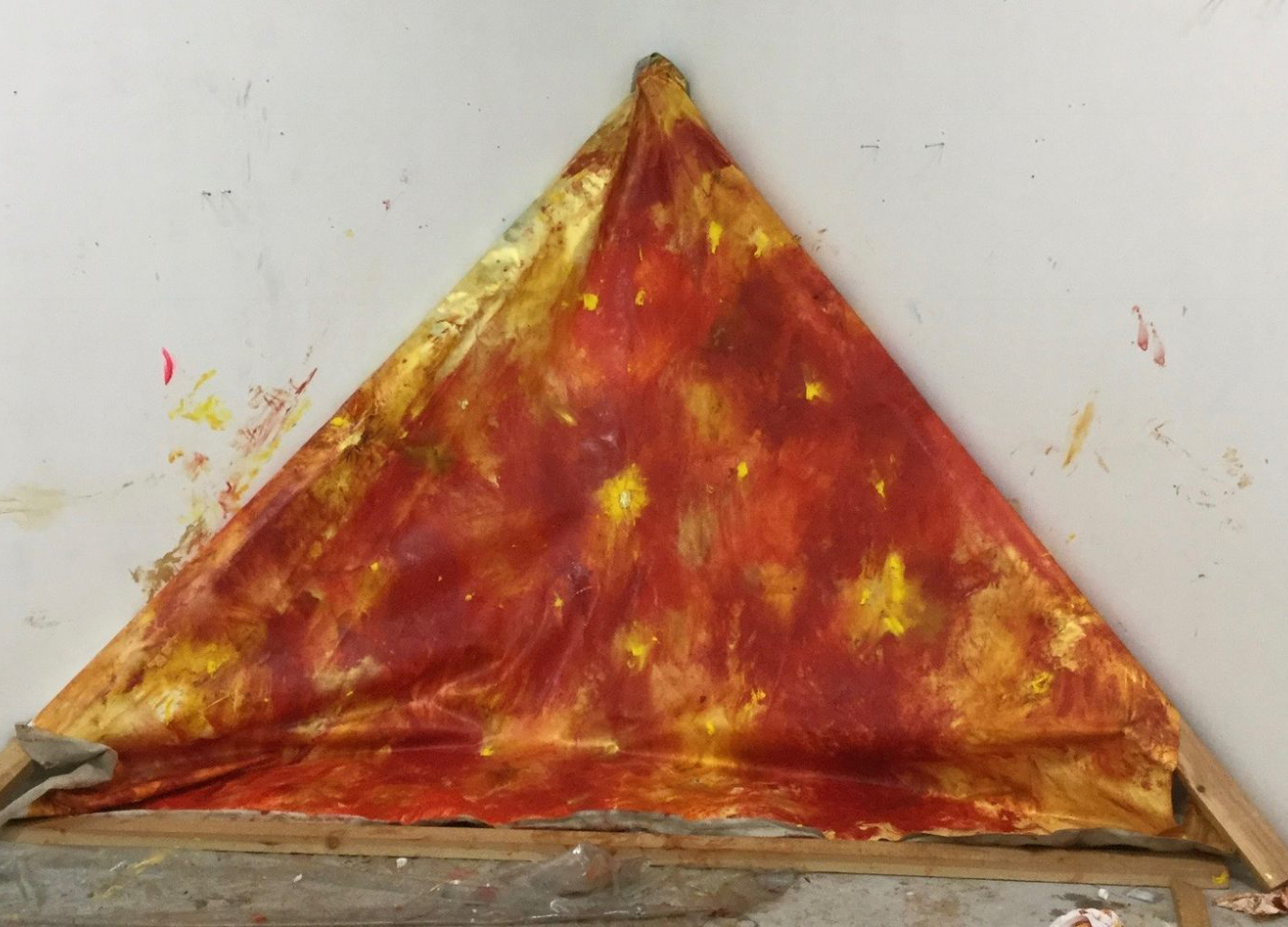 Unnamed #56 230x380x60cm |
 Dream in Winter |
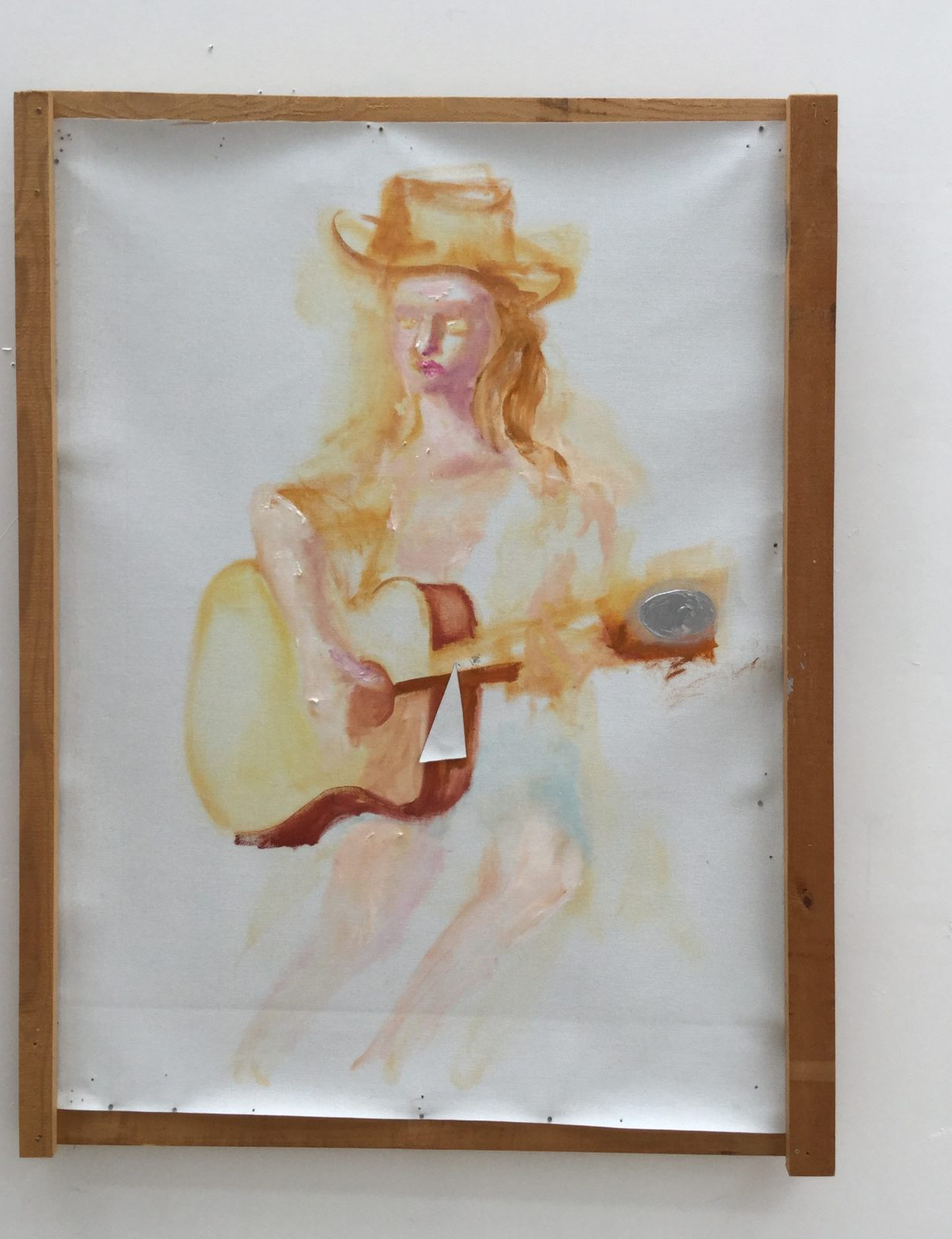 Thrice Upon A Time |
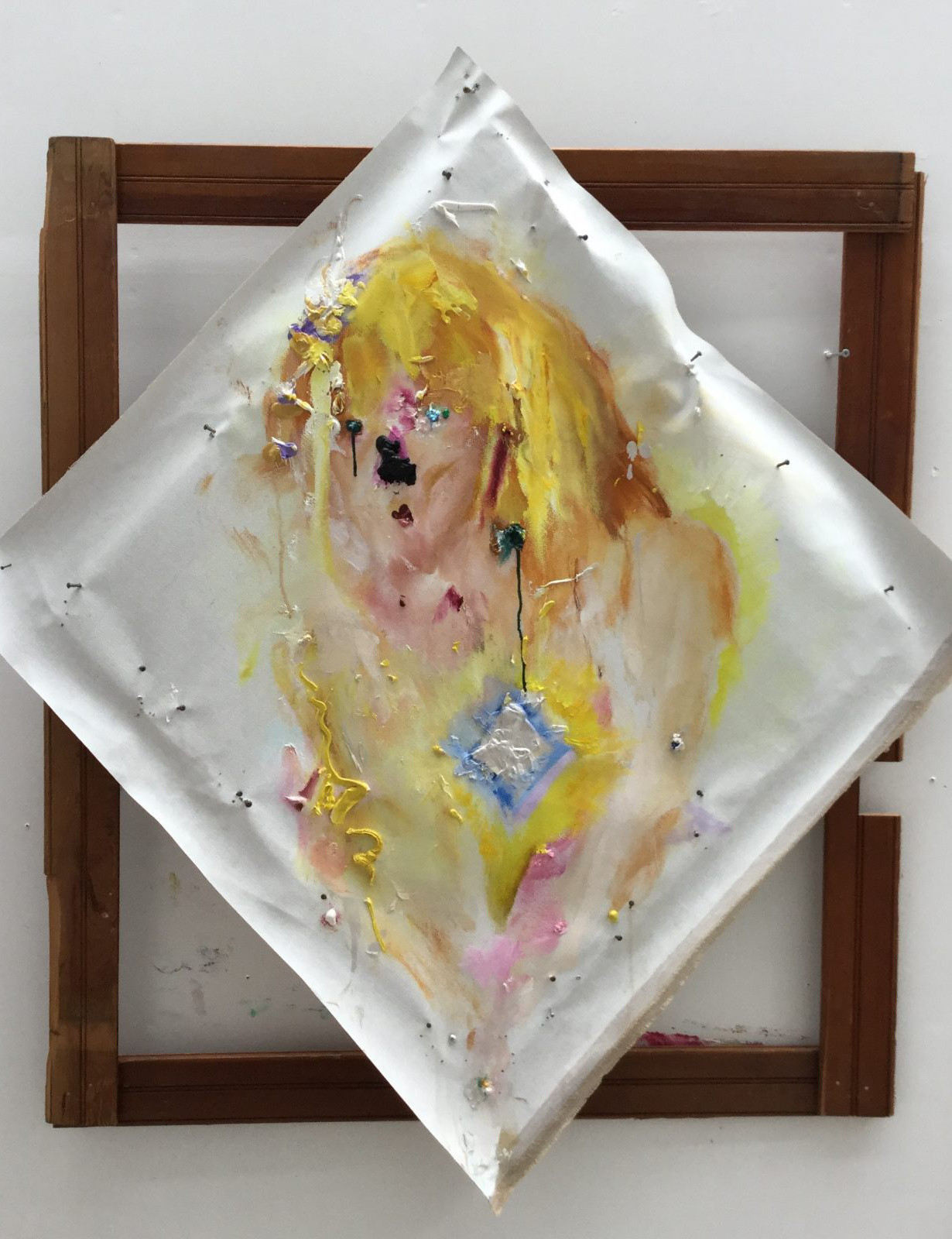
|
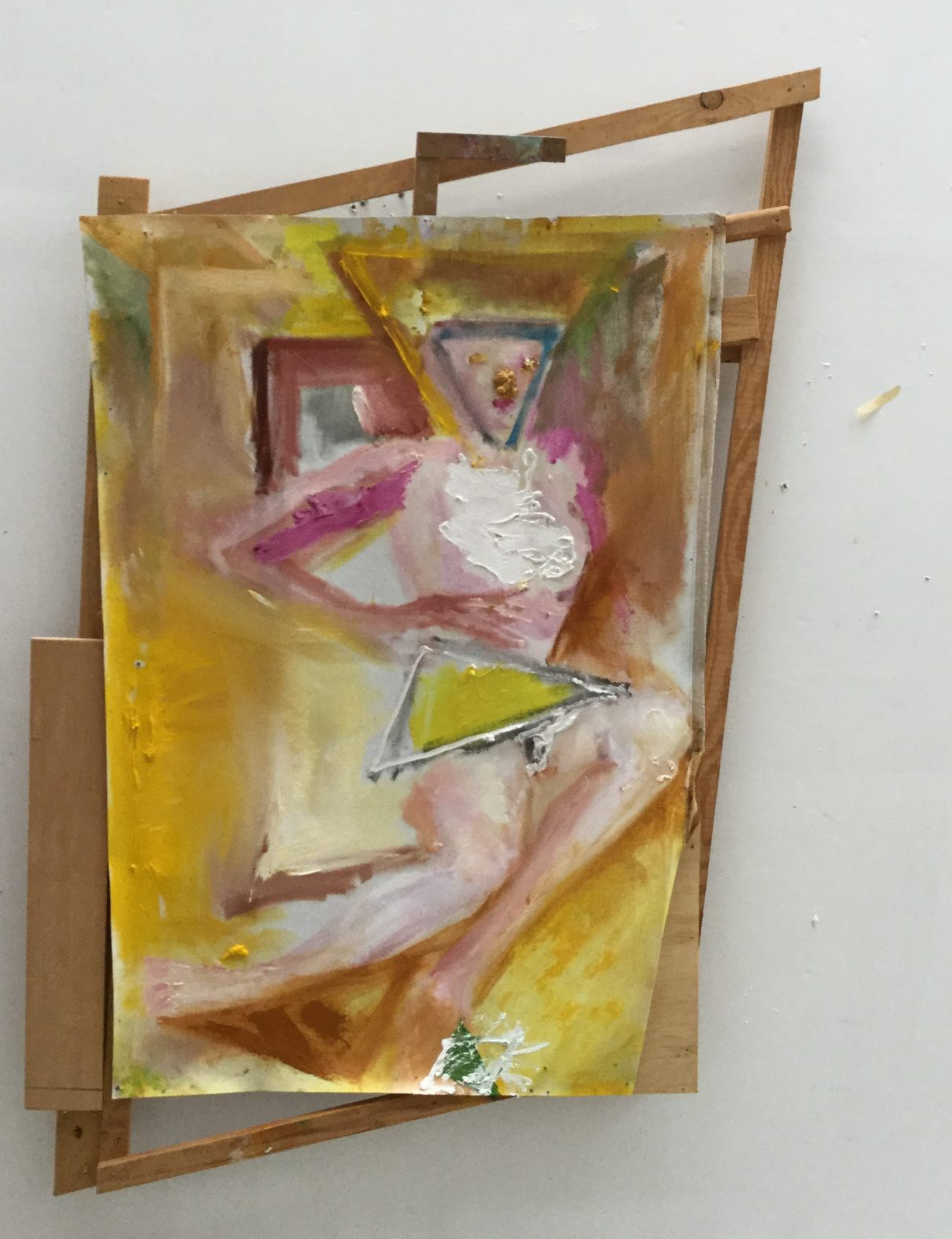 |
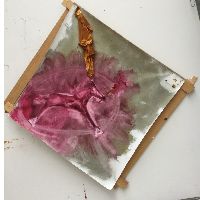 Love 176x171cm |
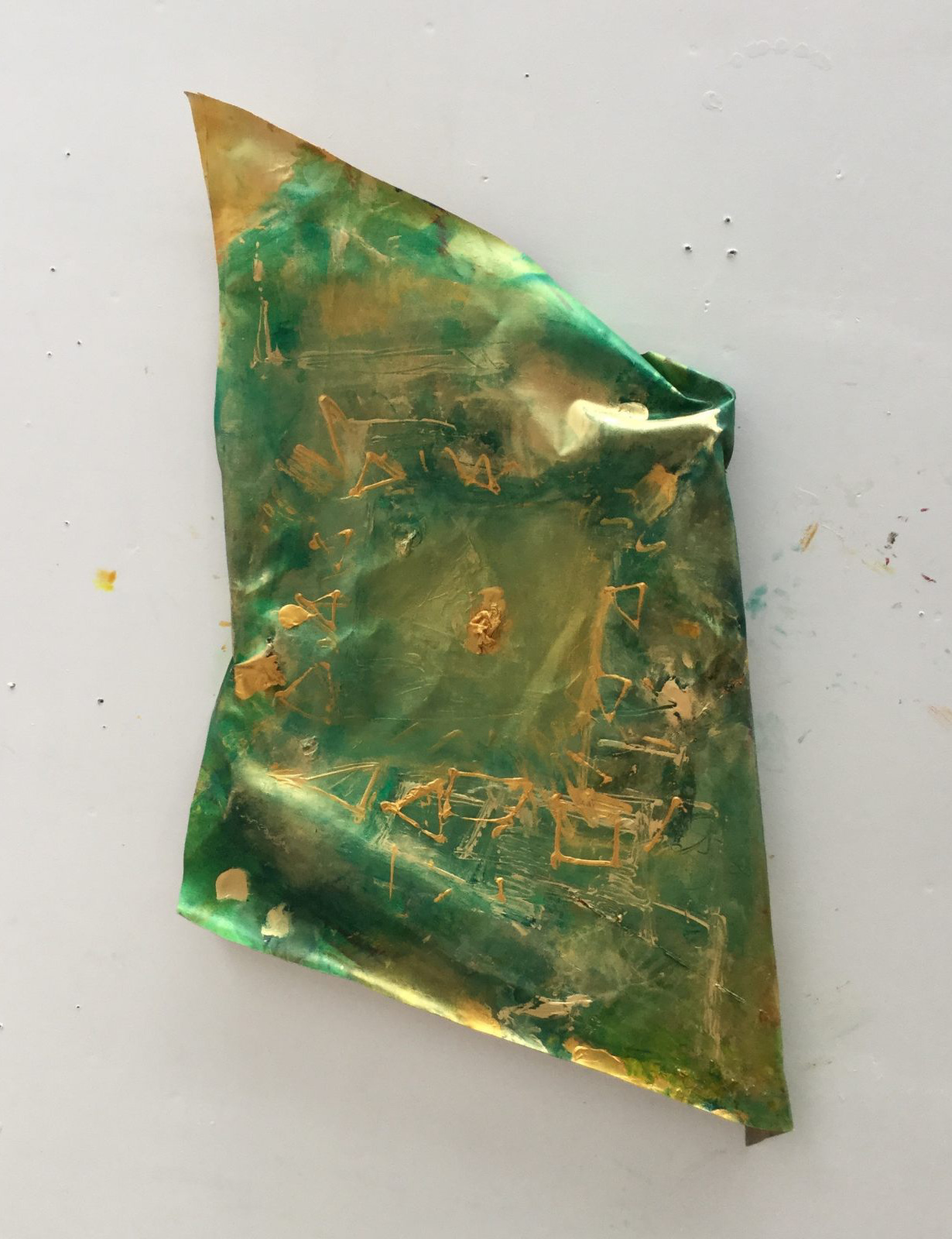 |
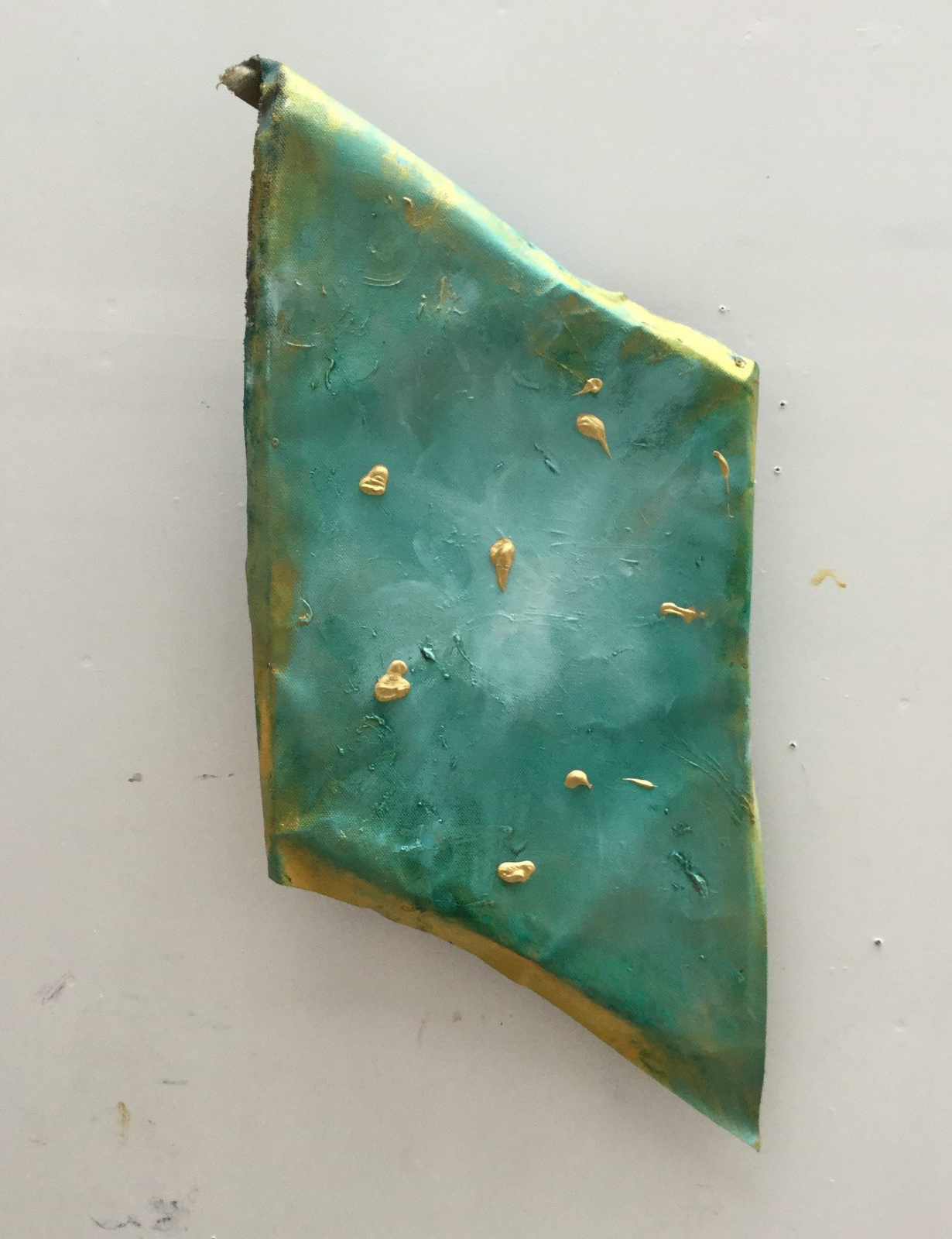 |
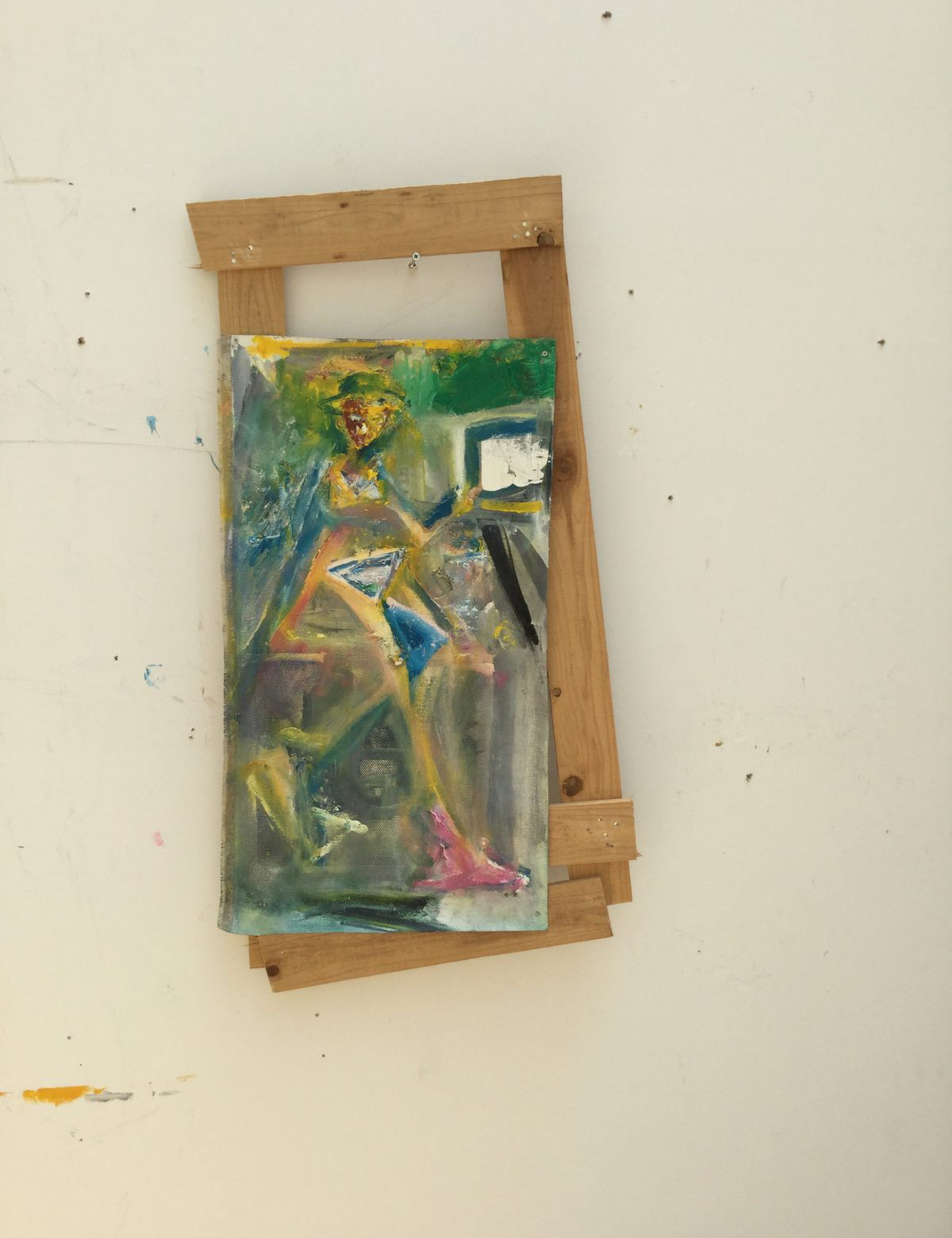 |


